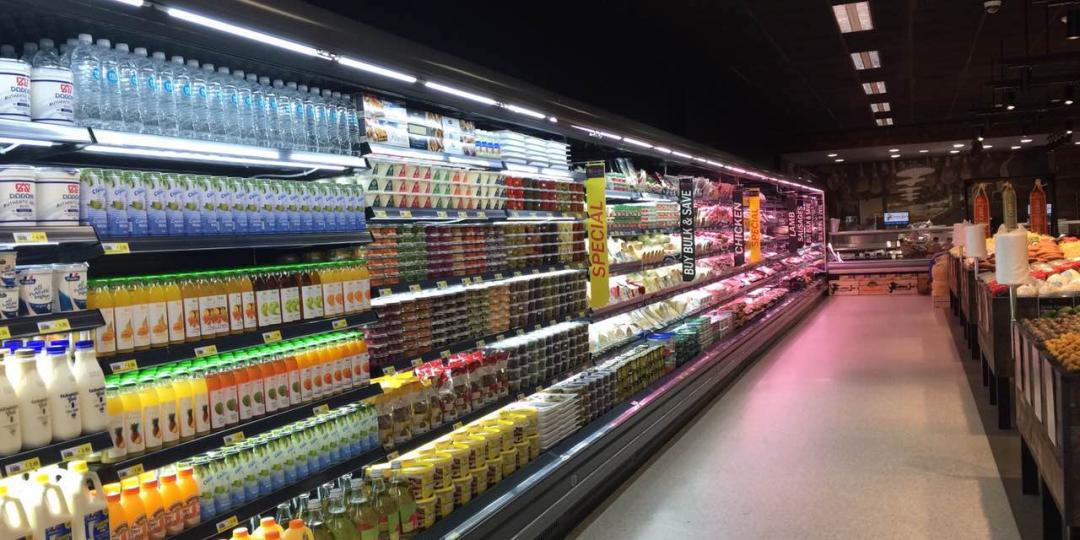Information from Danfoss
It is a challenging time to work on a supermarket’s technical team right now. Competitive pressure has brought an even greater need to reduce running costs, and often to do it with a reduced headcount. Many new kinds of store facility technologies promise to help. Big data, automation, and the Internet of Things (IoT) all have the potential to save food retailers time, money, and energy, while preventing food waste.
Here are five ways major food retailers around the world –and their refrigeration contractors – are realising real-world benefits, right now. And they’re doing it by connecting their in-store systems to the internet.
Saving time responding to technical alarms
Most stores protect food safety and the customer experience by using alarm functions to alert a technician if something is notworking or a sensor reading is outside a set parameter. These can cover everything from the temperature rising because a cooler door was left open, to a broken light or fan. Some alarms are genuinely urgent and could lead to lost stock or sales. Others can wait to be batched as part of a technician’s task list, making servicing more efficient. But a large store can have dozens of alarm events a day; just interpreting all the error codes can be a full-time job. When your refrigeration system controller is online, you can outsource this triage task – saving time and money and giving you coverage all year round. For example, Danfoss Enterprise Services’ (DES) international teams handle 2,8-million alarm events every month. There’s an online dashboard, so it’s easy to see, triage and prioritise system alarms, all at once, at both a store and chain level. This saves technician time and makes maintenance more efficient. And a centralised monitoring centre can learn from worldwide alarm data to help interpret every alarm quickly, understand where risk lies, and improve diagnostic problem solving.
Cutting service callouts by up to 30% by using remote maintenance
For a food retailer, triaging system alarms in this way can help you to batch and plan your maintenance, saving technical workload without compromising food safety, shopper experience, or system reliability. But it’s possible to go further and intervene remotely to solve refrigeration issues, without a technician visiting the store at all. “Today’s retailers have the ability to make use of analytic reporting systems to monitor their stores performance and efficiencies”, says Alistair Bell, a technical sales engineer at Danfoss.
Avoiding food waste and saving time satisfying HACCP
Centrally monitoring your alarms means service technicians can immediately prioritise emergencies when they come through. But that’s only one way a connected system can help retailers avoid food waste. Accurate sensors in the refrigeration case can track and measure cooling performance to a high degree of accuracy. This, and the fact that setpoints can be adjusted remotely, means supermarkets can move away from the wasteful practice of including a wide margin of error around refrigeration temperature settings without risking food safety. More accurate temperature control makes cooling safer and often more efficient.
Furthermore, since the system manager is connected online, the temperatures are all logged automatically at regular intervals. This means you have detailed evidence that every item of food has been kept in optimum conditions throughout. You can satisfy HACCP without requiring staff to manually record temperatures up to four times a day per cabinet.
Analysing data trends to identify chain-wide savings
For years, supermarkets have looked closely at sales data trends to optimise the performance of individual stores – even individual displays. But fewer retailers realise it is possible to do exactly the same thing with in-store technical systems to reduce operating costs. It’s enabled by a connected system manager. According to Bell, the Danfoss AK-SM800 system manager is capable of load shedding and managing peak load demands during peak periods. The system manager can optimise the system’s performance with accurate temperature measurement of stock.
Also, the system’s analytics manager can assist with as much as 30% call out fee savings, allowing the service technician to attend to alarms and analytic data from a remote location. The analytics cloud manager includes reporting such as pre-alerting the service company of failures which may occur in the days to follow.
Adapting your energy use to benefit from utility incentives
A growing number of supermarkets are engaging in energy arbitrage, adapting their energy consumption to respond to discounted off-peak energy or moments of peak demand. For example, utility companies will often offer bonuses to companies which help them balance supply and demand in the grid. And supermarkets are ideally placed to benefit. A simple change, like temporarily reducing sales floor lighting or allowing air conditioning temperature to drift slightly, could produce energy tariff savings with minimal impact on the shopping experience. But in most stores, refrigeration uses more energy than anything else and holds the greatest savings potential.
Harnessing this without risking food safety is possible but takes significant food refrigeration experience. It is also worth knowing that a connected system manager makes the process much easier – the energy saving measures can be triggered remotely, carefully monitoring the refrigerators to ensure temperatures stay in line. The system can also collect the evidence to claim the benefit from the energy provider.
Moving from preventative to predictive maintenance
These measures are all possible now, with today’s technology. The system is managing them for tens of thousands of food retailers worldwide. But the future is even more exciting. As more supermarket systems are connected, more retailers can all benefit from the resulting data. “The store manager is able to access a great amount of data which is very beneficial to the store’s operations and storeowners’ financials”, concludes Bell.
Currently, this extra safety measure could mean that planned refrigeration downtime and servicing costs are higher than they need to be. If managers had a clearer idea of which units were likely to break down, when, and under what conditions, they could save money accordingly. By analysing performance data, it’s possible to get an accurate prediction of the risk that an asset will fail. Then, retailers can focus their maintenance spend and catch small problems before they become expensive emergencies.
We’re using analytics to see if that data can tell us whether a unit will break down. If it can, we’ll be able to help retailers and maintenance contractors focus tight maintenance budgets where it reduces their risk the most. To balance these current and potential benefits, it’s important to have a system that delivers savings today but is also ready for the future. For example, at Danfoss, our philosophy is to use open protocols, so customers can decide for themselves what happens to their data and how it’s used. It makes collaboration and updates easy. That means there’s no reason to wait for future developments, retailers can start saving money, protecting their margins, and saving time right now.
Contact Lynne McCarthy, Danfoss, Tel 011 785-7628, mccarthyl@danfoss.com















